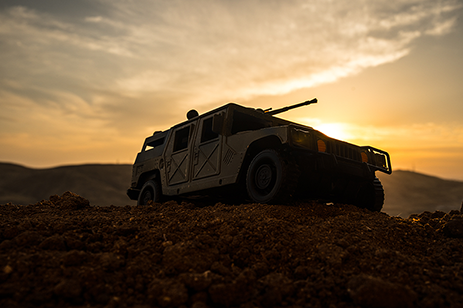
Aerospace and Defense programs undergo vigorous testing to achieve qualification for rugged military environments. Demands for achieving these qualifications can involve specific and special system verifications and are typically time consuming and expensive. Common areas of concern are EMI/EMC requirements, thermal management, and durability of the electronics.
EMI/EMC requirements require very specific filtering and grounding schemes that are best understood through test and experience. EMI and EMC testing expose systems to conducted and radiated electromagnetic effects and monitors electromagnetic effects generated by the system. The control of EMI is an art and science that seeks to prevent the various interdependent and independent electronic systems on military platforms from interfering with each other's normal operation. MIL-STD-461 is concerned with specifying technical requirements for testing EMI emissions and susceptibility at the subsystem-level and equipment-level. All Curtiss-Wright systems are successfully tested for these requirements and our experience allows us to make this a low risk effort.
Thermal environment can also be very stringent. Today's most advanced, high performance modules, such as multicore Intel Core i7 and GPGPU-based 6U VPX Single Board Computers and DSP Engines, can dissipate heat in the 120-200W range. Military solutions that dissipate up to 200W of heat per- single slot require advanced cooling approaches. A solution like Air Flow Through cooling is a proven approach for these modules. For 3U VPX where power can be in the 50-75W per slot range, Curtiss-Wright has developed solutions to dissipate this power without the requirement of fans such as the MPMC-9341 and MPMC-9321 mission computer products.
High vibration requirements often need special considerations. The ability of COTS electronic modules to meet the worst case vibration requirements of tactical fighter jets or helicopters has long been questioned. As a leader in the market, Curtiss-Wright has spearheaded testing for this environment on COTS modules and driven improvements to key components, like connectors, for the whole industry. To help customers evaluate COTS solutions for the durability required in these platforms, Curtiss-Wright has prepared reports and white papers that present our comprehensive testing and results.
Curtiss-Wright offers a range of solutions that comply the most stringent environmental requirements. For many of our computers, a qual report can be provided from testing that has been completed, eliminating the cost and risk of testing all together. Along with a proven test infrastructure, system integrators can shorten development cycles, get to deployment faster, and eliminate many of the tasks associated with COTS solution testing and integration, allowing, integrators to focus their efforts and resources on building the overall system solution and application.